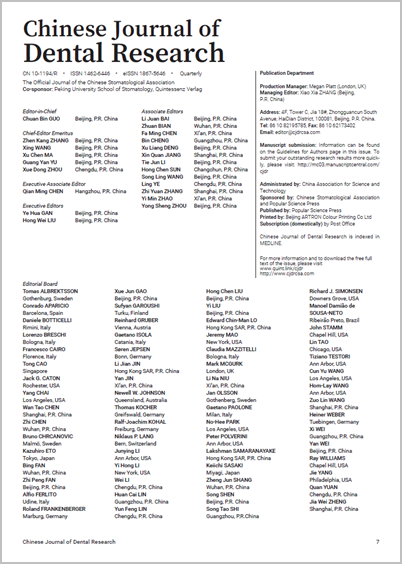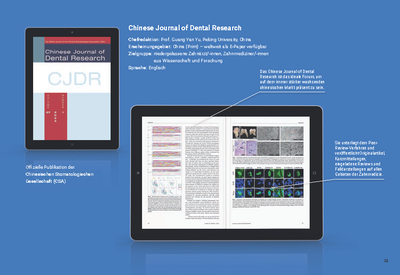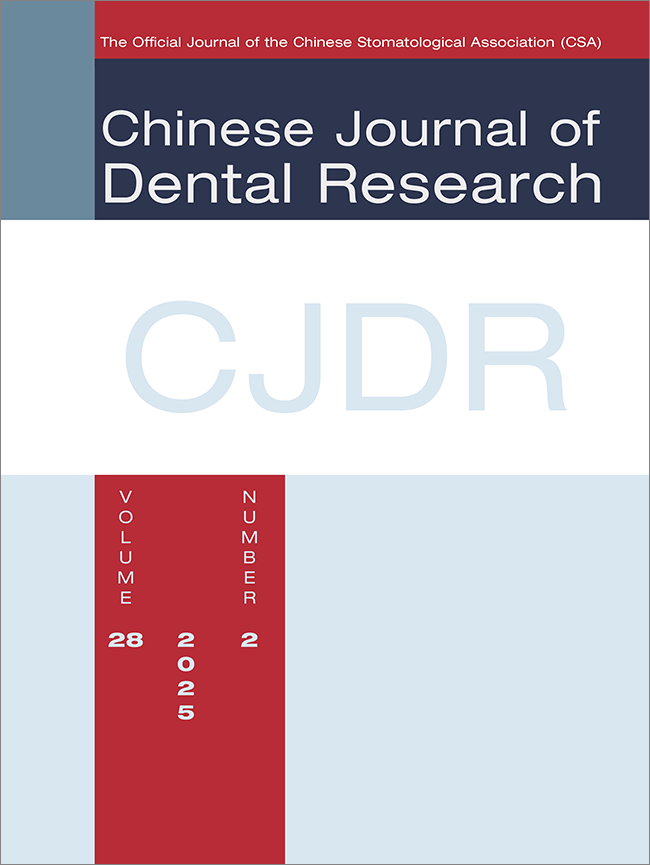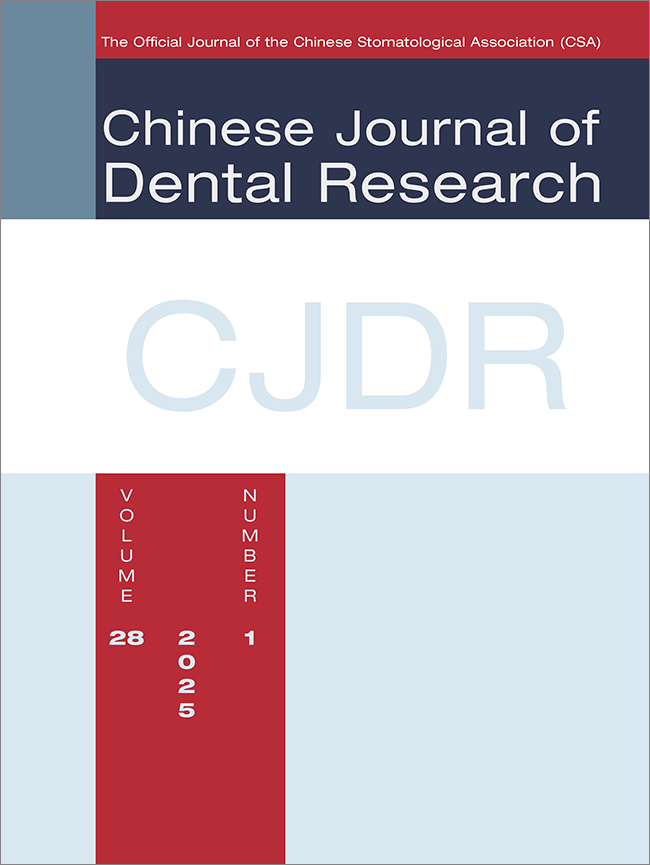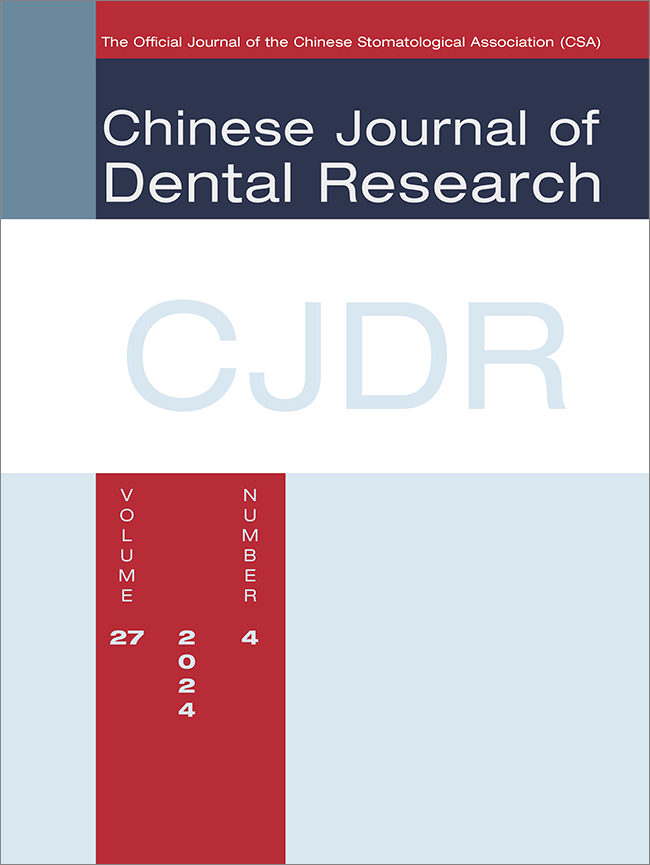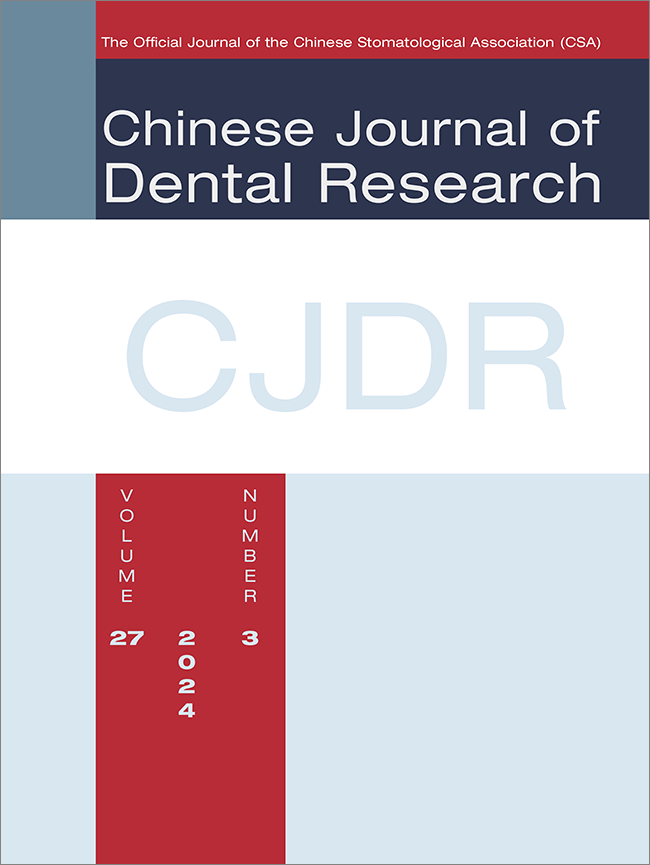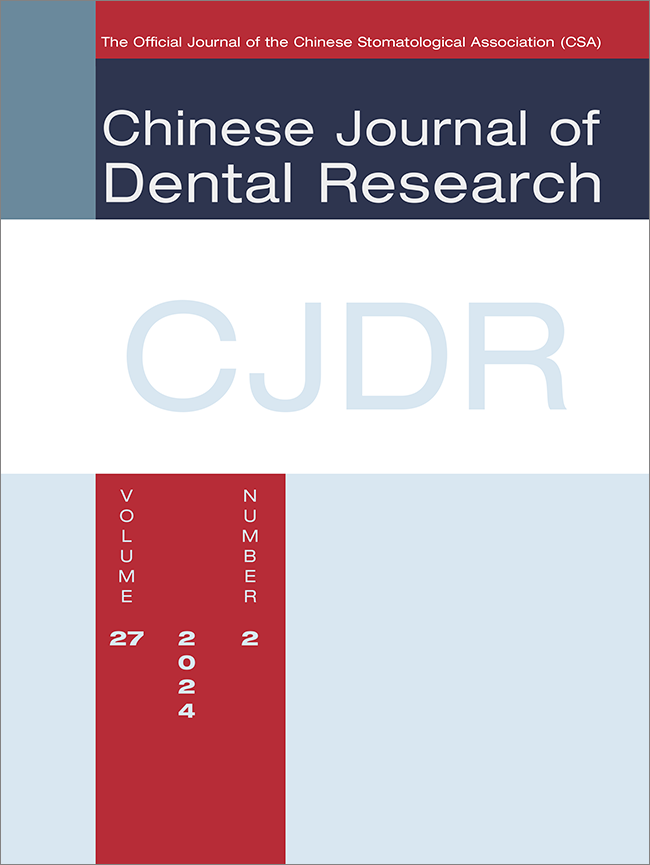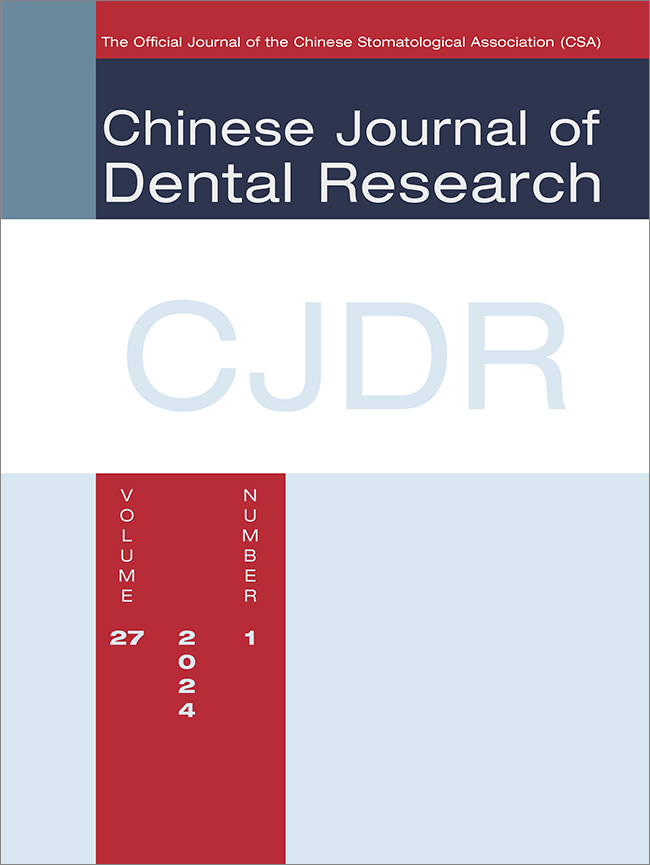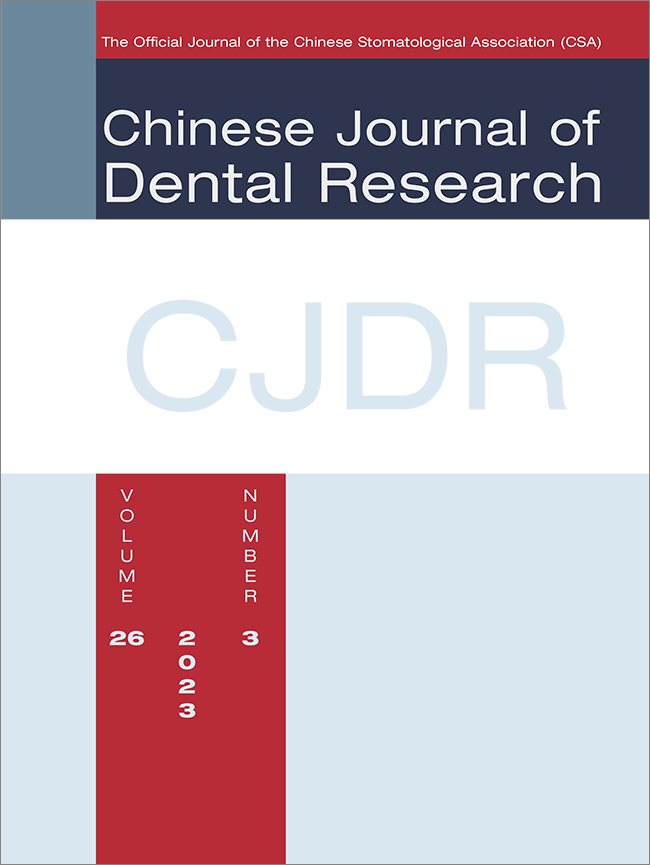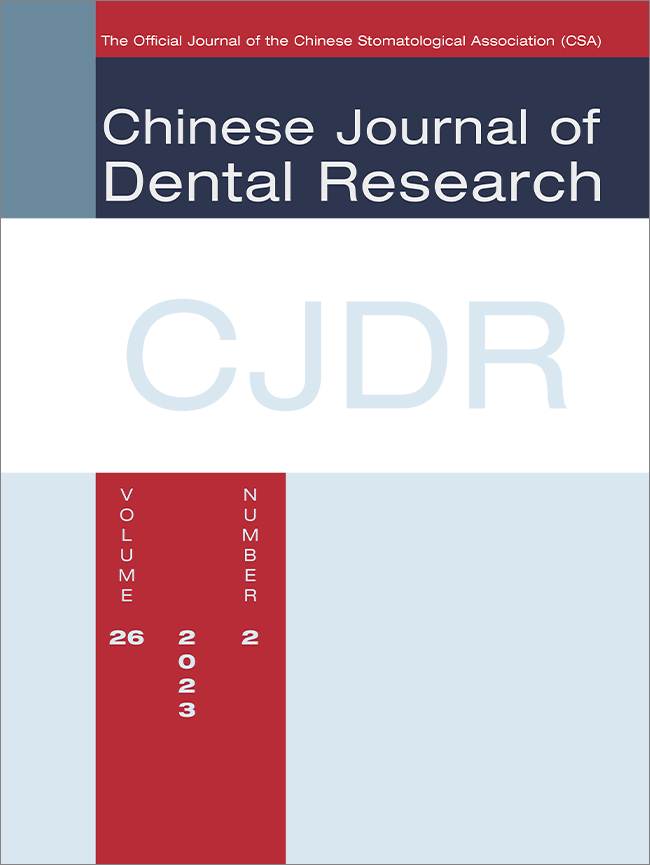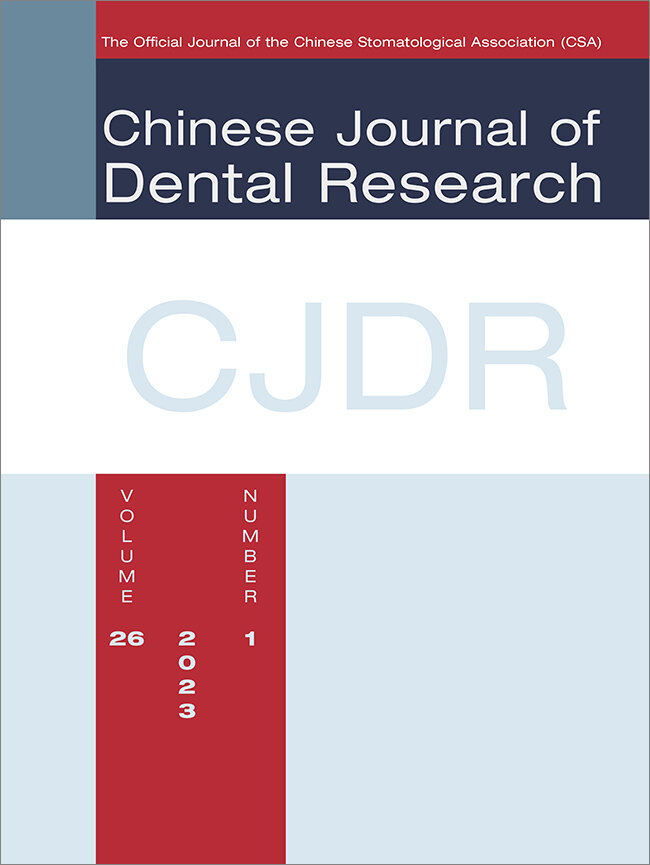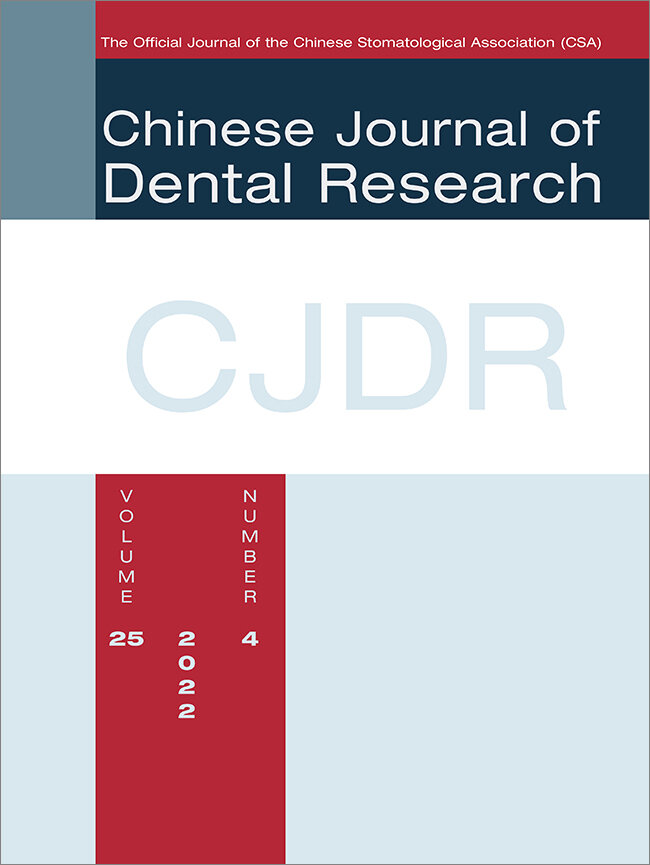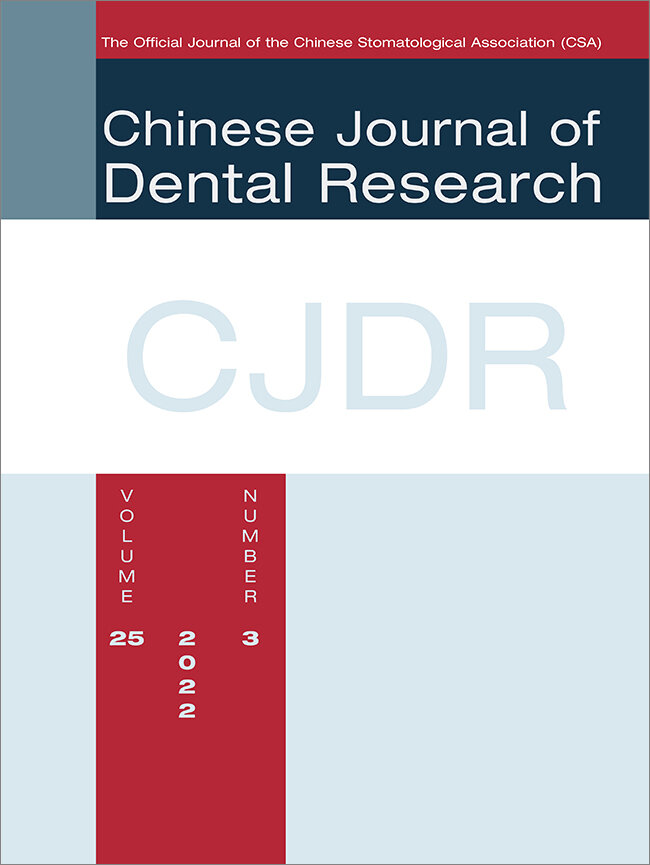DOI: 10.3290/j.cjdr.b6260563Seiten: 89-104, Sprache: EnglischYang, Shuang / Yu, Chang Hao / Li, Fei Fei / Shi, Yu / Wang, Hui / Tian, Wei Dong / Yuan, Quan / Ye, Ling / Yu, Fan YuanThe regeneration of oral maxillofacial hard tissues is currently one of the issues of most concern in public health. This complex process involves a variety of cell types residing in a specialised microenvironment known as the adult stem cell niche in living organisms. Within this niche, adult stem cells are considered to play a central role in the regeneration of hard tissues, which undergo rapid proliferation and differentiation into progenitor cells to replace lost tissue, throughout postnatal life. Their fate is tightly regulated by the niche factors secreted by the non-stem niche cells present within the same microenvironment. Over the past decades, the advent of lineage tracing techniques has revolutionised the in vivo study of cell dynamics. Through tissue- and temporally-specific labelling of Cre-expressing cells, this method enables researchers to depict the defined cell fates and differentiation trajectories. The present review summarises the progress made in lineage tracing studies of hard tissue formation cell populations residing in the oral and maxillofacial regions, with a focus on stem cells, progenitor cells and niche cells. The aim is to provide new clues for future research endeavours.
Schlagwörter: adult stem cell niche, hard tissue formation, lineage tracing, niche cell, oral maxillofacial region, progenitor cell, stem cell
DOI: 10.3290/j.cjdr.b6260577Seiten: 105-114, Sprache: EnglischShen, Zong Shan / Yang, Ji Chen / Zhao, Chuan Jiang / Cheng, BinObjective: To explore the underlying mechanisms of the association between periodontitis and cognitive impairment. Methods: Single-nucleus transcriptomics of mice were used to investigate the impact of periodontitis on brain and hippocampal cells to gain insights into disease progression. After data processing, functional enrichment, pathway analysis and cell-cell communication analysis were used to identify the distinct pathways and genes upregulated in Alzheimer’s disease (AD) linked to periodontitis. After cell culture, real-time quantitative polymerase chain reaction (RT-qPCR) and enzyme-linked immunosorbent assay (ELISA) were used to confirm the results. Results: The present authors identified endothelial inflammation as a key factor in periodontitis-related AD. The findings revealed that the upregulation of Mgll expression in endothelial cells was linked to increased antigen presentation and exacerbated neuroinflammation, potentially worsening AD. Moreover, the present authors elucidated MGLL-2AG-CB2 signalling, through which MGLL activation suppresses CB2 expression and leads to heightened inflammation, while MGLL inhibition restores CB2 levels and mitigates inflammation. Conclusion: The present study revealed the role of MGLL in linking periodontitis to hippocampal endothelial inflammation and antigen presentation in cognitive impairment. This research will enhance the understanding of how periodontitis impacts cognition and explore potential therapeutic strategies to alleviate periodontitis-associated cognitive impairment.
Schlagwörter: cognitive impairment, endothelial inflammation, MGLL, periodontitis, single-nucleus transcriptomics
DOI: 10.3290/j.cjdr.b6260583Seiten: 115-122, Sprache: EnglischParpo, Enni / Lassila, Lippo / Vallittu, Pekka K / Garoushi, SufyanObjective: To assess the impact of incorporating various weight fractions of nanometre-sized particulate fillers on specific properties of microfilled composite resin. Methods: Microfilled composite resin was prepared by mixing 29 wt.% of resin matrix (BisGMA/TEGDMA) with the 71 wt.% of silane treated particulate fillers (Ø 0.4 µm). Then, various fractions of nanometre-sized (180 nm) fillers (0, 5, 10, 15, 20, 25, 30 and 35 wt.%) were added gradually using a high-speed mixing machine. For each composite resin, flexural properties (n = 8) were evaluated using a three-point bending test on a universal testing machine (ISO standard 4049). Fourier transform infrared (FTIR)-spectrometry was used to calculate the degree of monomer conversion (DC%). Surface microhardess (Vickers) was also determined. Surface gloss was measured before and after polishing (4,000-grit paper). A two-body wear test was performed in a ball-on-flat configuration using a chewing simulator with 15,000 cycles. A non-contact 3D optical profilometer was utilised to measure wear depth. An analysis of variance (ANOVA) was applied to interpret the results statistically, then a post hoc Tukey analysis was performed. Results: ANOVA revealed that the fraction of nanofillers had a significant effect (P 0.05) on flexural modulus, DC%, microhardness, gloss and wear depth. The group without nanofillers showed the highest DC% (56.6%), gloss after polishing (76.2 GU) and wear resistance (24.2 µm) values, whereas the group with 35 wt.% of nanofillers had the highest flexural modulus (9 GPa) and microhardness (70 VH). Conclusion: It is beneficial to add nanofillers to microfilled composite resin; however, it is essential to assess the proportion ratio carefully. Optimising all the properties of composite resin at once with just one formulation is challenging.
Schlagwörter: microfilled composite resin, nanofiller fractions, properties
DOI: 10.3290/j.cjdr.b6260618Seiten: 123-129, Sprache: EnglischQin, Qian Yi / Zheng, Yun Fei / Huang, Yi Ping / Lin, Yi Fan / Guo, Run Zhi / Li, Wei RanObjective: To develop a new alveolar bone morphology classification for maxillary incisors in patients with maxillary protrusion, and to investigate the association of alveolar morphology with skeletal patterns and alveolar bone defects following retraction. Methods: A retrospective study of CBCT scans was performed for 250 patients with maxillary protrusion. The morphology of alveolar bone around maxillary incisors was classified into four types: A1 (upright maxillary incisor in thin alveolar bone), A2 (lingually inclined maxillary incisor in thin alveolar bone), B1 (upright maxillary incisor in thick alveolar bone) and B2 (lingually inclined maxillary incisor in thick alveolar bone). The association of alveolar types with different skeletal patterns and the incidence of post-treatment alveolar bone defects were analysed. Results: For maxillary incisors in patients with maxillary protrusion, A1 was the most common alveolar type (33.4%), followed by A2 (28.5%), B1 (22.1%) and B2 (16.0%). Types B1 (34.4%) and A2 (42.2%) were the most common in maxillary central and lateral incisors, respectively. In high angle patients, A2 and A1 were the most common types for maxillary lateral (49.6%) and central incisors (41.2%), respectively. Additionally, types A1 and A2 were at greater risk of severe lingual dehiscence. Conclusion: This is the first alveolar bone morphology classification for maxillary incisors in patients with maxillary protrusion. The alveolar types exhibited a significant association with skeletal patterns and the incidence of alveolar bone defects after retraction.
Schlagwörter: alveolar bone morphology, classification, maxillary incisor
DOI: 10.3290/j.cjdr.b6260624Seiten: 131-137, Sprache: EnglischDedeoğlu, Numan / Altun, OğuzhanObjective: To assess the canalis sinuosus (CS) in pathological lesions located in the anterior maxilla using CBCT. Methods: In total, 104 lesions in the anterior maxilla were assessed. The localisation of CS termination points on the alveolar crest was evaluated. Subsequently, the consistency of the CS and CS–lesion relationships were determined based on the maximal diameter of the lesion and the presence of a cortical perforation. Results: Of the 104 lesions, 82 (78.8%) exhibited at least one CS. The presence of CS was statistically significantly different based on the diameter of the lesion (P 0.001). When the presence of CS was investigated in relation to cortical perforation status, a significant difference was observed (P 0.05). Anatomically, CS was most common in the central incisor and ended most frequently near the crest apex vertically and in the palatal region horizontally. Among the instances of CS, 55.3% were lesion-related, 22.3% were in contact and 23 (22.3%) were unrelated to the lesion. Conclusion: The incidence of CS was high in anterior maxillary pathological lesions and even higher in small-sized pathological lesions. Most CSs were located within or next to the surgical margin of the pathological lesion.
Schlagwörter: canalis sinuosus, CBCT, maxilla, oral surgery, pathological lesion
DOI: 10.3290/j.cjdr.b6260628Seiten: 139-146, Sprache: EnglischIşik, Merve / Doğan Çankaya, Tülin / Uğur Aydin, ZelihaObjective: To compare the results of non-surgical endodontic retreatment (NSER) applied in a single visit between type 2 diabetes mellitus (DM) patients with teeth with apical periodontitis (AP) and healthy individuals. Methods: The subjects enrolled were divided into two groups. The type 2 DM group was composed of 26 single-rooted mandibular teeth belonging to 26 patients (aged 45.04 ± 10.13 years; 19 women and 7 men) who did not have any other systemic disease. The control group, meanwhile, consisted of 27 single-rooted mandibular teeth from 27 patients (aged 37.78 ± 12.61 years; 15 women and 12 men) with no systemic disease. Both groups received single-visit non-surgical endodontic retreatment. Periapical radiographs were taken with a parallel technique before NSER and at least 6 months after treatment. Periapical index scores (PAI) for the relevant teeth were recorded. The data obtained were analysed statistically. P 0.05 was considered significant. Results: In both groups, postoperative PAI values decreased compared to the initial values after NSER treatment applied in a single visit (P 0.05); however, there was no significant difference in the change in PAI values over time between the control and type 2 DM groups (P > 0.05). There was also no significant difference in healing between men and women in both groups (P > 0.05). Conclusion: Following single-visit NSER in teeth with apical periodontitis, similar treatment outcomes were achieved in patients with type 2 DM and healthy individuals.
Schlagwörter: diabetes mellitus, endodontic treatment, periapical index
DOI: 10.3290/j.cjdr.b6260631Seiten: 147-151, Sprache: EnglischFei, Yue / Lai, Guang Yun / Wang, JunOsteonecrosis involving the permanent tooth germ in primary dentition is a rare condition that can affect dental and maxillofacial development without correct intervention. This case report presents the successful recovery from drug-induced mandibular osteonecrosis involving the permanent tooth germ in a child. A healthy 4-year-old Chinese girl visited the clinic with an unhealed gingival wound and alveolar bone exposure of the missing primary molar area after 1-day arsenic trioxide sealing during pulp therapy. Radiographic examinations indicated inflammation and sequestrum formation in the jaw. The diagnosis was mandibular osteonecrosis. The treatment plans involved sequestrectomy without extended curettage and removal of the affected permanent tooth germ with systemic antibiotic therapy. A 6-year follow-up revealed no recurrence of the lesion or complications, a gradual increase in bone density of the osteonecrosis area and the development of adjacent permanent tooth germs. A conservative treatment regimen without extended curettage may be an option for young patients with jaw osteonecrosis.
Schlagwörter: arsenic trioxide, deciduous teeth, osteonecrosis, sequestrectomy, tooth germ





